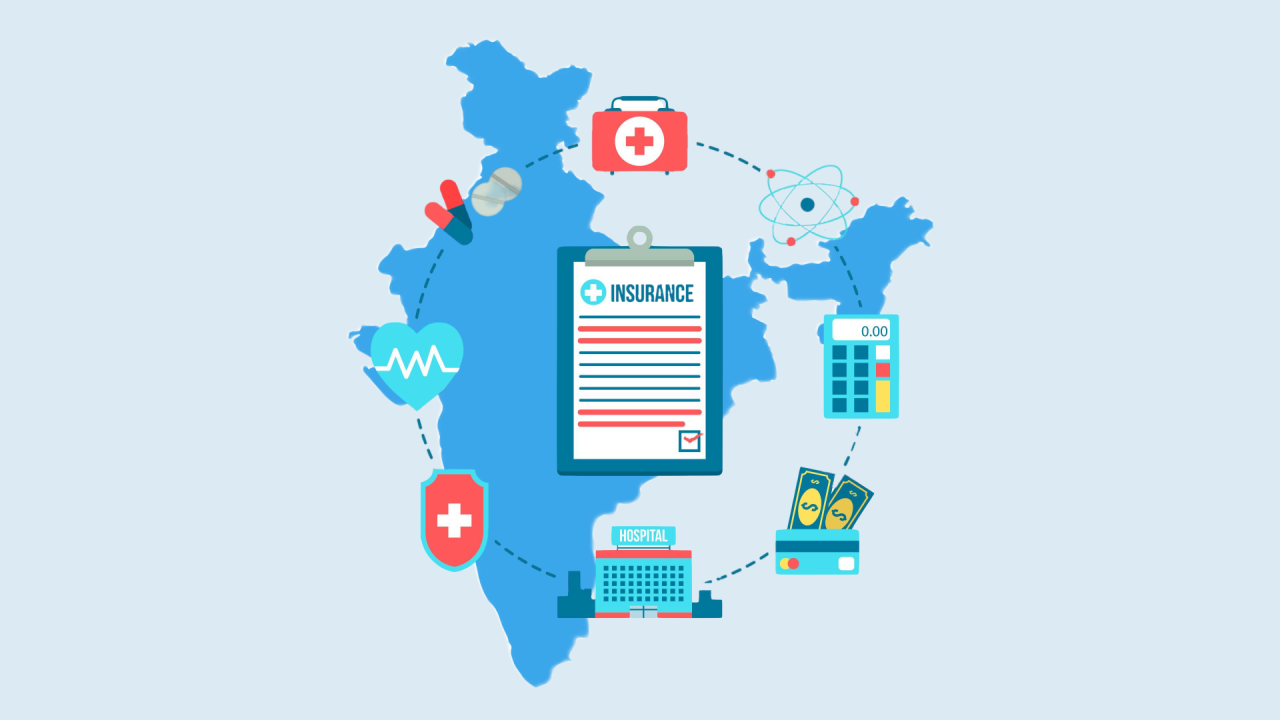In an unpredictable world, safeguarding our well-being is paramount, and at the core of this protection lies health insurance. Far more than just a financial safety net, care health insurance is a critical tool for managing the escalating costs of medical care, ensuring access to necessary treatments, and providing peace of mind during times of illness or injury. Navigating the complex landscape of healthcare funding without adequate coverage can lead to immense financial strain and compromised health outcomes. This isn’t just about paying medical bills; it’s about making smart choices to protect your health, your finances, and your future, ensuring that quality care is accessible when you need it most.
The Imperative of Health Coverage

The rising costs of medical services, coupled with the unpredictable nature of health, make comprehensive health insurance an indispensable component of modern financial planning. Its importance extends beyond individual well-being to societal health and economic stability.
A. Mitigating Financial Risk:
* Skyrocketing Medical Costs: Healthcare expenses, from routine doctor visits to emergency surgeries and chronic disease management, can quickly accumulate into overwhelming debt. A single major illness or accident can devastate a family’s finances without insurance.
* Catastrophic Protection: Health insurance acts as a buffer against unforeseen medical emergencies, ensuring that high-cost treatments, hospital stays, and specialized procedures are covered, preventing personal bankruptcy.
* Predictable Expenses: While monthly premiums are a predictable cost, they prevent the unpredictable and potentially astronomical expenses of uncovered medical care, allowing for better financial planning.
* Access to Negotiated Rates: Insurance companies negotiate lower rates with healthcare providers and hospitals. Uninsured individuals often pay full, higher charges for the same services.
B. Ensuring Access to Quality Care:
* Preventative Services: Most health insurance plans cover preventative care (e.g., vaccinations, screenings, annual check-ups) at little to no out-of-pocket cost. This encourages early detection and intervention, often preventing more serious and costly conditions down the line.
* Network of Providers: Plans typically offer access to a network of vetted doctors, specialists, hospitals, and pharmacies, ensuring that covered individuals have a broad choice of quality healthcare providers.
* Specialized Treatments: Complex and expensive treatments for chronic conditions, rare diseases, or advanced surgeries are often only accessible or affordable with comprehensive insurance coverage.
* Continuity of Care: Having consistent insurance allows individuals to build long-term relationships with healthcare providers, leading to better coordinated and personalized care.
C. Peace of Mind and Well-being:
* Reduced Stress: Knowing you are covered in case of illness or injury significantly reduces financial and emotional stress, allowing you to focus on recovery.
* Encourages Proactive Health: With covered preventative care, individuals are more likely to seek early medical attention for concerns, leading to better overall health outcomes and potentially preventing progression of diseases.
* Family Protection: Health insurance protects not just the individual but also their dependents, safeguarding the entire family’s health and financial stability.
* Support for Chronic Conditions: For those with chronic illnesses, insurance provides ongoing access to necessary medications, specialist visits, and therapies, enabling effective management of their conditions and improved quality of life.
D. Legal and Social Imperatives (in some regions):
* Mandatory Coverage: In some countries (e.g., the United States under the Affordable Care Act, though continually debated), health insurance coverage is legally mandated, making it a compliance necessity.
* Public Health: Widespread health insurance coverage contributes to a healthier overall population, reducing the spread of communicable diseases and improving public health outcomes.
* Social Responsibility: Many view access to healthcare as a fundamental human right, and health insurance plays a crucial role in enabling this access.
Key Components of a Health Insurance Plan
Understanding the various terms and components of health insurance is essential for making an informed decision and maximizing your benefits.
A. Premium:
* Definition: The monthly (or sometimes annual) amount you pay to the insurance company to keep your coverage active. It’s like a subscription fee for your health coverage.
* Factors Influencing Premium: Age, location, plan type, tobacco use, and the number of dependents covered can all affect your premium.
B. Deductible:
* Definition: The amount of money you must pay out-of-pocket for covered medical services before your insurance plan starts to pay. For example, if your deductible is $2,000, you pay the first $2,000 of covered expenses in a policy year.
* Impact: High-deductible plans typically have lower monthly premiums but require you to pay more upfront for care. Low-deductible plans have higher premiums but less initial out-of-pocket cost for services.
C. Copayment (Copay):
* Definition: A fixed amount you pay for a covered healthcare service after you’ve paid your deductible (or sometimes before, depending on the service). For example, a $20 copay for a doctor’s visit.
* Purpose: Copays are designed to share the cost of routine services between the insured and the insurer, encouraging judicious use of services.
D. Coinsurance:
* Definition: Your share of the cost of a covered healthcare service, calculated as a percentage (e.g., 20%) of the allowed amount for the service after you’ve met your deductible.
* Example: If your coinsurance is 20% and a covered service costs $1,000 after your deductible, you would pay $200 (20% of $1,000), and the insurance company would pay $800.
E. Out-of-Pocket Maximum (or Limit):
* Definition: The maximum amount you will have to pay for covered medical expenses in a policy year. Once you reach this limit, your insurance plan pays 100% of all covered benefits for the remainder of the year.
* Importance: This feature protects you from catastrophic financial burden, ensuring that there’s a ceiling to your medical expenses, no matter how severe the illness or injury.
* What’s Included: Deductibles, copayments, and coinsurance payments usually count towards the out-of-pocket maximum. Premiums typically do not.
Types of Health Insurance Plans
The health insurance market offers various plan types, each with a different structure for accessing care, affecting costs, flexibility, and provider choice.
A. Managed Care Plans:
* Health Maintenance Organization (HMO):
* Characteristics: Requires you to choose a Primary Care Provider (PCP) within the network who acts as a gatekeeper. You need a referral from your PCP to see specialists.
* Pros: Generally lower premiums and out-of-pocket costs, simpler structure.
* Cons: Less flexibility in choosing providers; no coverage for out-of-network care (except emergencies).
* Preferred Provider Organization (PPO):
* Characteristics: Offers more flexibility. You don’t need a PCP referral to see specialists, and you can see out-of-network providers (though at a higher cost).
* Pros: More choice and flexibility in providers.
* Cons: Higher premiums and out-of-pocket costs compared to HMOs.
* Exclusive Provider Organization (EPO):
* Characteristics: A hybrid. You don’t need a referral to see specialists within the network, but typically no coverage for out-of-network care (except emergencies), similar to an HMO for network restrictions.
* Pros: More flexibility than HMO within the network, lower costs than PPO.
* Cons: No out-of-network coverage.
* Point of Service (POS):
* Characteristics: Combines features of HMO and PPO. You choose a PCP and need referrals within the network, but you can opt to go out-of-network for a higher cost, similar to PPO.
* Pros: Some flexibility, but often more complex.
B. High-Deductible Health Plans (HDHPs) with Health Savings Accounts (HSAs):
* Characteristics: Plans with higher deductibles than traditional plans. To qualify for an HSA, the plan must meet specific deductible and out-of-pocket maximum thresholds.
* Health Savings Account (HSA): A tax-advantaged savings account that can be used for qualified medical expenses. Contributions are tax-deductible, funds grow tax-free, and withdrawals for medical expenses are tax-free.
* Pros: Lower monthly premiums. HSA offers tax benefits and portable savings for future medical expenses.
* Cons: Higher upfront costs for medical care before the deductible is met. Requires discipline to save in the HSA.
C. Catastrophic Health Plans:
* Characteristics: Have very high deductibles and typically lower monthly premiums. Designed primarily to protect against major, unexpected medical costs.
* Eligibility: Usually available only to individuals under 30 or those with a hardship exemption.
* Pros: Lowest premiums.
* Cons: High out-of-pocket costs for routine care. Limited coverage for non-emergency services.
D. Fee-for-Service (FFS) / Indemnity Plans:
* Characteristics: Less common now. You pay for services as you receive them, and then the insurance company reimburses you a percentage of the costs. No network restrictions, but no negotiated rates either.
* Pros: Complete freedom to choose any doctor or hospital.
* Cons: High costs, significant paperwork, and no discounted rates.
How to Choose the Right Plan

Selecting the optimal health insurance plan requires a careful assessment of your personal health needs, financial situation, and lifestyle.
A. Assess Your Healthcare Needs:
* Current Health Status: Are you generally healthy with few medical needs, or do you have chronic conditions that require frequent doctor visits, specialists, or regular medication?
* Expected Medical Use: Do you anticipate needing any surgeries, starting a family, or planning for specific treatments in the coming year?
* Prescription Medications: Do you take regular prescription drugs? Check the plan’s formulary to ensure your medications are covered and what tier they fall into.
* Preferred Doctors/Hospitals: Are there specific doctors or hospitals you want to continue seeing? Check if they are in the plan’s network.
B. Evaluate Your Financial Situation:
* Budget for Premiums: How much can you comfortably afford to pay each month for premiums?
* Ability to Pay Deductibles/Out-of-Pocket: Can you afford to pay a high deductible upfront if a major medical event occurs? Or do you prefer higher premiums for lower out-of-pocket costs?
* Employer Contributions: If coverage is through an employer, understand their contribution to premiums and any HSA/FSA contributions.
C. Compare Plan Types:
* HMO vs. PPO: Weigh the trade-offs between lower costs/limited choice (HMO) and higher costs/more flexibility (PPO).
* HDHP with HSA: Consider if you are relatively healthy, can afford the high deductible, and want the tax advantages of an HSA for long-term savings.
* Catastrophic Plan: Only consider if you are young and healthy and primarily want protection against major medical events.
D. Utilize Online Tools and Resources:
* Marketplace Websites: In countries with health insurance marketplaces (e.g., healthcare.gov in the U.S.), use their comparison tools to see available plans, costs, and benefits.
* Employer Benefits Portals: If offered through work, carefully review all plan documents and decision support tools provided by your employer.
* Insurance Broker/Agent: Consider consulting a licensed insurance broker or agent. They can help you understand complex plans, compare options, and find plans tailored to your needs at no extra cost to you.
* Online Reviews and Ratings: Look for reviews of insurance companies and specific plans regarding customer service, claims processing, and network satisfaction.
E. Read the Fine Print:
* Summary of Benefits and Coverage (SBC): This is a standardized document that all plans must provide, summarizing key features and costs. Compare SBCs side-by-side.
* Exclusions and Limitations: Understand what services or conditions are not covered.
* Referral Requirements: Be clear on whether you need referrals for specialists.
* Prior Authorization: Know if certain expensive tests or procedures require prior approval from the insurance company.
Emerging Trends in Health Insurance
The health insurance landscape is constantly evolving, driven by technological advancements, changing healthcare delivery models, and a growing emphasis on personalized and preventative care.
A. Personalized and Data-Driven Insurance:
* Wearable Integration: Insurance companies are beginning to offer incentives (e.g., lower premiums, rewards) for customers who share data from wearables (fitness trackers, smartwatches) demonstrating healthy behaviors (e.g., regular exercise, good sleep).
* AI for Risk Assessment: AI and machine learning are being used to analyze vast amounts of health data (anonymized and aggregated) to refine risk assessments, tailor premium pricing, and predict health outcomes more accurately.
* Genomic Integration: In the future, genetic data might be used to offer highly personalized insurance plans or preventative care strategies based on individual predispositions to certain diseases. This raises ethical and privacy concerns that need to be addressed.
* Behavioral Economics: Leveraging insights from behavioral science to design plans that encourage healthier choices through nudges and incentives.
B. Digital Health and Telemedicine Integration:
* Telehealth as a Core Benefit: Many plans now offer robust telehealth services (virtual doctor visits) as a primary method of care, particularly for routine consultations, chronic disease management, and mental health services. This improves access and convenience.
* Digital Front Doors: Insurance companies and providers are investing in intuitive mobile apps and online portals that allow users to manage their benefits, find providers, schedule appointments, and access health information seamlessly.
* AI-Powered Navigation: Chatbots and AI assistants help members navigate their benefits, find in-network providers, and understand their bills.
C. Focus on Prevention and Wellness:
* Wellness Programs: More plans are offering comprehensive wellness programs that include gym memberships, nutrition counseling, smoking cessation programs, and mental health support, with incentives for participation.
* Value-Based Care: A shift from “fee-for-service” to “value-based care,” where providers are reimbursed based on patient outcomes and quality of care, rather than just the volume of services. This encourages preventative measures and coordinated care.
* Employer-Sponsored Wellness Initiatives: Companies are increasingly integrating wellness programs into their employee health benefits, often with insurance company partnerships, to reduce healthcare costs and improve employee well-being.
D. Blockchain and Interoperability:
* Secure Data Sharing: Blockchain technology holds promise for creating secure, immutable records of health data, potentially improving interoperability between different healthcare providers and insurance companies while maintaining privacy.
* Streamlined Claims Processing: Blockchain could automate and speed up claims processing by creating transparent and verifiable transaction records.
* Fraud Prevention: The immutable nature of blockchain can help reduce fraud in healthcare billing and claims.
E. Global Health and Insurance Innovations:
* Cross-Border Telehealth: Facilitating remote consultations with specialists across international borders, expanding access to expertise.
* Tailored International Plans: Specialized health insurance plans designed for expatriates, digital nomads, and frequent international travelers, offering global coverage and emergency medical evacuation.
* Micro-Insurance: Developing affordable, micro-insurance products for low-income populations in developing countries, often delivered via mobile platforms, to increase access to basic healthcare coverage.
Challenges and the Path Forward for Health Insurance
Despite innovation, the health insurance sector faces significant challenges, from regulatory complexities to affordability and maintaining trust.
A. Affordability and Cost Escalation:
* Rising Premiums: Despite innovations, the underlying costs of healthcare continue to rise, leading to increasing premiums for consumers and employers.
* High Out-of-Pocket Costs: Even with insurance, high deductibles, copays, and coinsurance can still create significant financial barriers to care for many.
* Balancing Access and Cost: Policymakers constantly struggle to balance providing universal access to quality care with containing spiraling costs.
B. Regulatory Complexity:
* Varying Regulations: Health insurance is heavily regulated, often differing significantly by country, state, or region, creating a fragmented and complex landscape for both insurers and consumers.
* Adapting to Innovation: Regulators face the challenge of creating frameworks that encourage innovation (e.g., telehealth, AI diagnostics) while ensuring patient safety, data privacy, and ethical considerations are met.
C. Data Privacy and Security:
* Sensitive Data: Health data is among the most sensitive personal information. Protecting it from cyberattacks and misuse is a paramount concern, especially with increased digitization and data sharing.
* Ethical Use of AI/Genomics: The use of AI and genomic data in insurance raises ethical questions about potential discrimination, bias, and ensuring fair access to coverage.
D. Trust and Transparency:
* Complex Terms: The complexity of insurance jargon and policy documents can erode trust. Simplifying language and increasing transparency are vital.
* Claims Denials: Negative experiences with claims denials can damage consumer trust. Streamlining and clarifying the claims process is crucial.
Conclusion
Care health insurance stands as a non-negotiable pillar of modern well-being, providing essential financial protection and ensuring access to vital medical services in an increasingly complex and costly healthcare landscape. From deciphering premiums and deductibles to choosing the right plan type, making smart health insurance choices is a strategic investment in your health and financial future. While the industry faces ongoing challenges in affordability, regulation, and data security, the relentless pace of innovation, driven by AI, digital health, and personalized approaches, promises a future where healthcare is more accessible, efficient, and tailored to individual needs. By understanding its fundamental role and actively engaging with its evolving landscape, we can collectively strive towards a future where robust health coverage empowers everyone to lead healthier, more secure lives, ensuring that protecting wellness is truly within reach for all.












